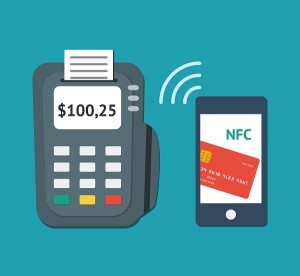 Seemingly everywhere you look, there’s media coverage about mobile payments and mobile POS. There’s no denying that mobile is hot: In the next five years, the mobile payments industry is expected to account for over $125 billion of worldwide consumer spending. It’s also clear that mobile POS innovation could potentially change the restaurant industry. Here’s how this may happen:
Seemingly everywhere you look, there’s media coverage about mobile payments and mobile POS. There’s no denying that mobile is hot: In the next five years, the mobile payments industry is expected to account for over $125 billion of worldwide consumer spending. It’s also clear that mobile POS innovation could potentially change the restaurant industry. Here’s how this may happen:
1. Mobile POS can bolster operating efficiencies, saving time, labor, and money. Inefficiencies in the kitchen and at the front of the business have long been a problem for many restaurant industry players. Mobile POS has the potential to turn the tide in several different ways. For example, mobile POS devices can replace traditional paper-based ordering methods, with orders accepted tableside by tablet-wielding servers or placed by diners themselves using tablets affixed to tables. Server time that would otherwise be wasted taking orders (in the case of table-mounted tablets), re-entering orders into a stationary POS terminal or hand-delivering orders to the kitchen can be spent assisting other customers, and kitchen staff can start and finish preparing food much faster. This makes more efficient use of human resources and may decrease staffing needs as well as labor expenditures.
Similarly, in quick–service restaurants, mobile POS enhances operating efficiencies by facilitating line-busting, which in turn increases customer throughput. Employees can be assigned to take orders and payments from diners anywhere on the premises, including the drive-through. Operators can also set up mobile POS stations or kiosks where customers can place their own orders.
2. Mobile POS can take sales to new heights. This can happen for several reasons. For starters, some patrons just feel more uninhibited—and therefore inclined to order more food or drinks—when they can peruse a menu without a server standing nearby. Additionally, with mobile POS devices in place, additional food and drink orders can be self-ordered, again increasing check size.
Moreover, many mobile POS solutions up the sales ante by prompting servers to engage in suggestive selling or, in environments where self-ordering via tablets is an option, conveying promotional messages to diners as they select and await their food and drinks. And the faster diners can place and receive their orders—whether directly or indirectly on a tablet or at a kiosk—the greater their satisfaction.
3. Mobile POS devices will attract more diners and foster an unparalleled level of customer engagement. It goes without saying that new mobile payment vehicles—including mobile wallets like Google Wallet, Apple Pay and the soon-to-debut CurrentC, as well as online ordering systems, pay-at-the-table solutions, and mobile apps—create transaction-processing efficiencies and boost sales through heightened customer satisfaction. However, this is just the tip of the iceberg.
In addition to bolstering the bottom line, restaurant operators are attempting to engage customers in the same way as their retailer counterparts. By integrating mobile POS solutions with loyalty programs and “push” promotions communicated online and via text message, restaurateurs give customers more of a reason to dine at their establishments and a greater inclination to engage with their brand.
While mobile POS may once have been an enigma to customers, this is no longer the case. More and more consumers are becoming familiar with mobile devices and are growing comfortable with the concept of using tablets and mobile phones to enhance their dining experience. The power of mobile POS and its ability to significantly change the restaurant business cannot be underestimated.






